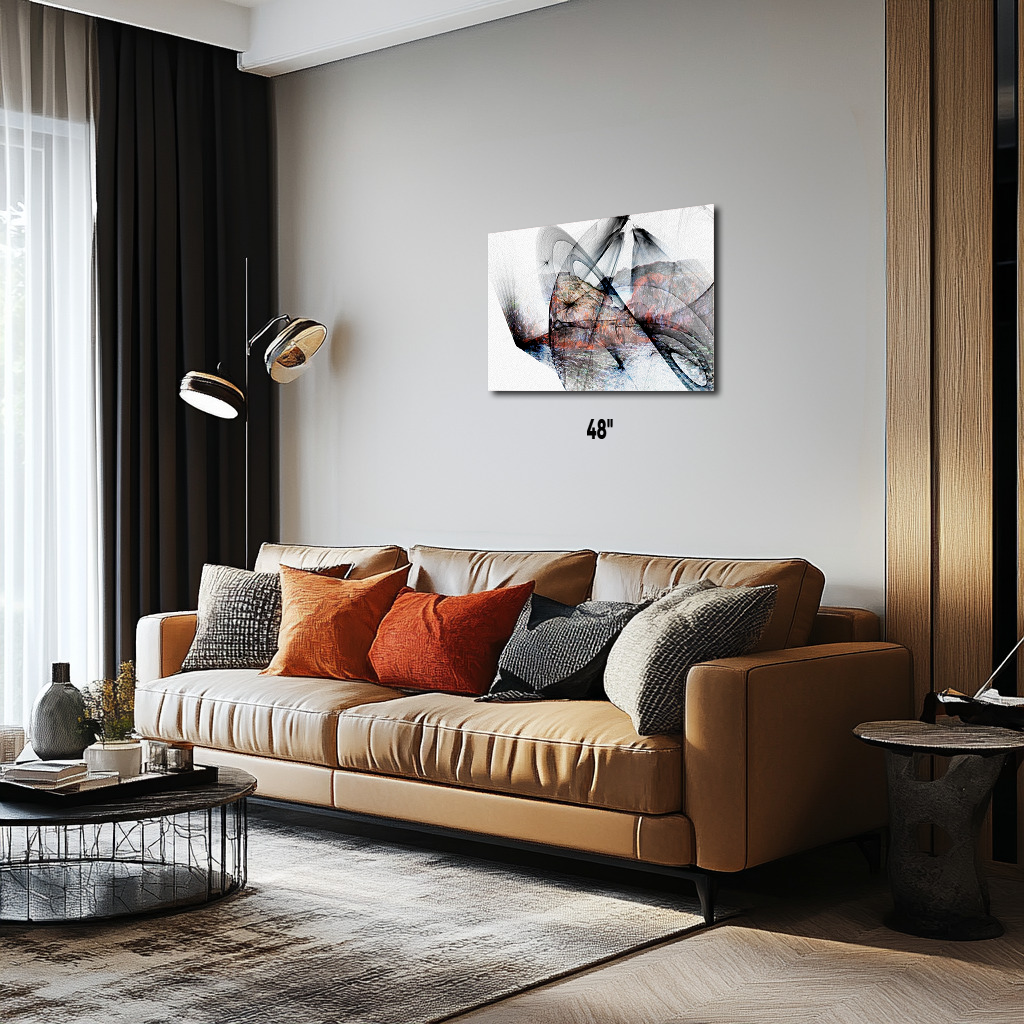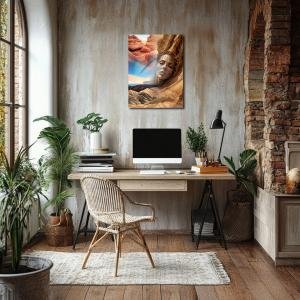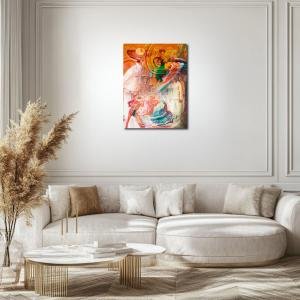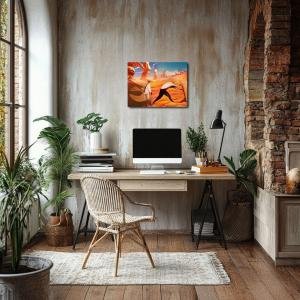Fractured Horizons: The Belle-Île Reimagined
"Fractured Horizons: The Belle-Île Reimagined" takes Claude Monet’s Belle-Île Rocks at Port Goulphar and propels it into a world of abstraction, where nature meets geometry, and time folds upon itself. The rugged coastal cliffs, once captured in impressionist brushstrokes, are now intersected by swirling arcs and fragmented lines, bending the natural landscape into a realm of shifting dimensions.
The painting plays with light and shadow, distorting Monet’s serene seascape into an almost cosmic void, where rock formations battle against encroaching modernity. The soft earth tones and ocean blues of the original work struggle to break through the overlays of black and white, symbolizing the impermanence of perception and the fragile nature of memory. The deep red hues embedded within the rocks stand as a reminder of nature’s resilience amid the abstract disruption.
This piece redefines how we interact with landscapes, demonstrating that even the most seemingly immovable forms—like cliffs against the sea—are subject to the transformations of time, perception, and artistic reinvention. Through this work, the viewer is invited to see not just the Belle-Île of Monet’s time, but a landscape that exists in a space between memory and imagination, between the past and a future yet to be defined.
Please see Below for Details…
Hotline Order:
Mon - Fri: 07AM - 06PM
404-872-4663
This abstract interpretation of Belle-Île Rocks at Port Goulphar by Claude Monet deconstructs the traditional impressionist seascape and rebuilds it through the fragmented lens of modern abstraction. The powerful rock formations and restless waters that Monet once painted with soft, blended brushstrokes are now intersected with sharp, geometric structures, bending the natural landscape into an ethereal, multidimensional space.
At the heart of the composition lies the rugged cliffs of Belle-Île, their rich earth tones clashing with the stark contrast of black and white overlays. The textures of the original painting are preserved but distorted, as though time and memory have altered the scene into a dreamlike mirage. The swirling black arcs and lines stretch across the canvas like fractured light, reminiscent of waves crashing against the jagged coastline.
The composition merges impressionism with a futuristic aesthetic, as translucent structures seem to emerge from the landscape itself, hinting at the tension between nature’s permanence and humanity’s abstract interventions. These intersecting forms create a sense of movement, as if the viewer is witnessing time folding upon itself, a merging of past and future into a singular, suspended moment.
The use of color holds deep significance in this transformation. Monet’s original blues, ochres, and seafoam whites are still present but partially obscured, as though the landscape is fighting to be remembered against the invasion of black and white voids. The metallic-like grayscale elements symbolize modernity, the intrusion of technology, and the impermanence of perception. The deep reds hidden within the rocks reflect the raw energy of nature, a silent but unwavering force amidst the disruption.
As an artist, I sought to explore the fragility of memory and vision. What we see is never fixed—it is in constant flux, shaped by emotions, time, and external forces. The Belle-Île of Monet’s time is still here, but it has been reshaped through the abstract prisms of thought and experience. This piece questions how landscapes, so deeply rooted in nature’s stillness, can also become fluid, their very existence shifting with perception.
This artwork is not just a reinterpretation of Monet’s work; it is an evolution of it. It represents the uncertainty of observation, the way memories of places transform in our minds, and the beauty of seeing the world through multiple layers of reality. It invites the viewer to reconsider what is natural and what is constructed—what is fixed in time and what is forever shifting.
Add your review
Your email address will not be published. Required fields are marked *
Please login to write review!
Looks like there are no reviews yet.








